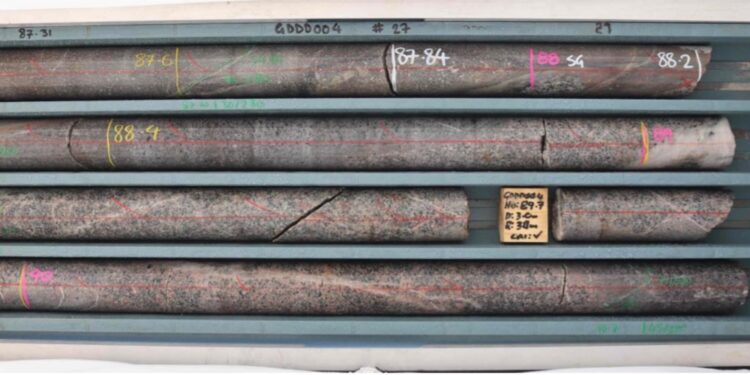Miramar Resources Limited (ASX:M2R) has intersected further high-grade gold mineralization in a step-out hole at “Glandore East” in Western Australia. The 100% owned Glandore Project is located within the Eastern Goldfields, approximately 40km east of Kalgoorlie, Western Australia.
GDDD004 was drilled 150m north of the historical high-grade diamond drill intersections and intersected 0.8m @ 12.6/t Au including 0.4m @ 23.0g/t Au.
Miramar’s drilling has now confirmed the presence of high-grade gold mineralization over a strike length of approximately 240m, with the mineralization remaining open along strike and at depth.
Executive Chairman, Allan Kelly, said the company was excited about the opportunity at Glandore East, especially given the very large aircore gold footprint.
“The new results are extremely significant as they have substantially increased the strike length of high- grade bedrock gold mineralization intersected to date,” he said.
“In addition, the new results also reinforce the strong relationship between the shallow aircore intersections and deeper high-grade bedrock gold mineralization.
“The aircore gold footprint at Glandore East stretches for well over a kilometre, but we have only tested a small portion of the total strike length with deeper drilling so far,” he said.
The high-grade bedrock gold mineralization in GDDD004 occurs 50m below a zone of supergene gold mineralization intersected in historic aircore drilling. The upper part of GDDD004 also intersected this supergene mineralization.
The mineralization occurs in a strongly sheared and altered felsic porphyry intrusion, towards the eastern contact of the Glandore granodiorite unit, with very coarse pyrite crystals.
The initial diamond drilling programme at Glandore East has now been completed with assays pending for the final two holes, GDDD006 and 007.
Further drilling will be planned once all results are received and interpreted.
The company is also considering completing a more detailed ground and/or UAV magnetic survey to help refine the multiple NE-trending, and potentially mineralized, structures at the contact between the granodiorite and the mafic units.
For further information please visit: https://www.miramarresources.com.au/












